I love church history, and in Rome, the history of the church spills out from the Vatican into many different places around the city, and my goal was to see as many of the Holy Relics around the city as possible.
Was it worth it? It was even more special than I could have imagined, and these are things I will think about for the rest of my life, it was so, so spectacular for a nerd like me.
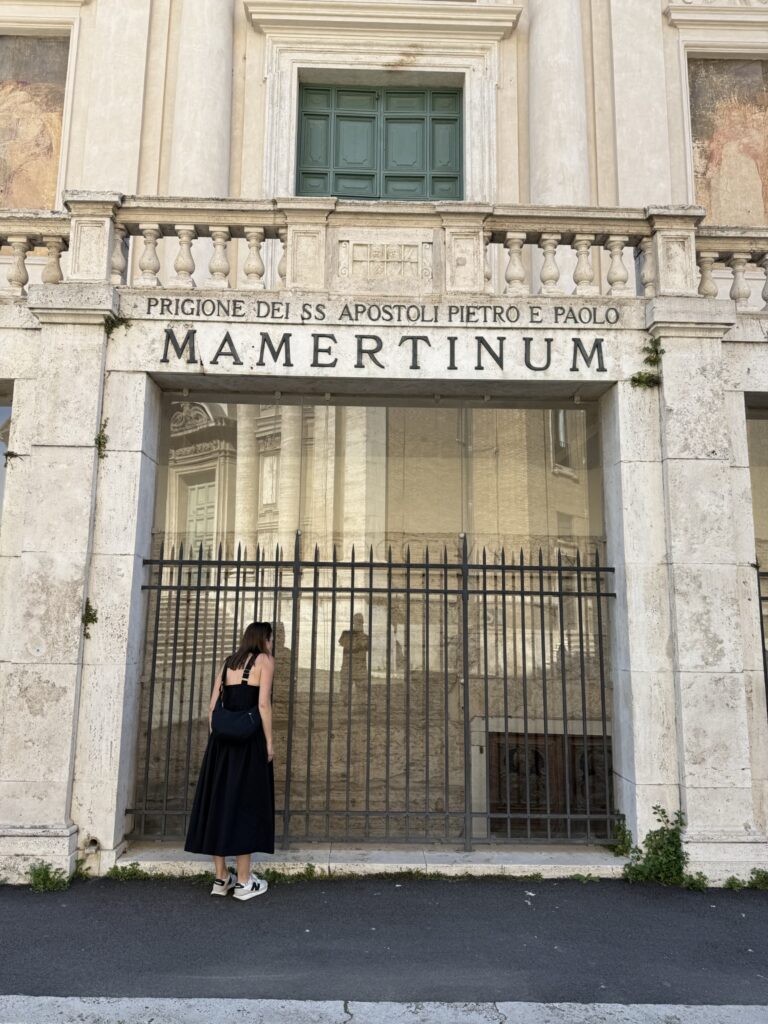
This is where both Peter and Paul were in Prison, called Mamertine Prison. It is just a hole in the ground- with a stainless steel staircase that allows people down single file. From the outside you cannot tell what it is, but they built a church on top of it in the 1st or second centuries. That church started falling apart, so they build another church on top of that one. Taylor and I paid the 6 euros to go down, and it was just a silent, grim little 15 foot by 15 foot hole.
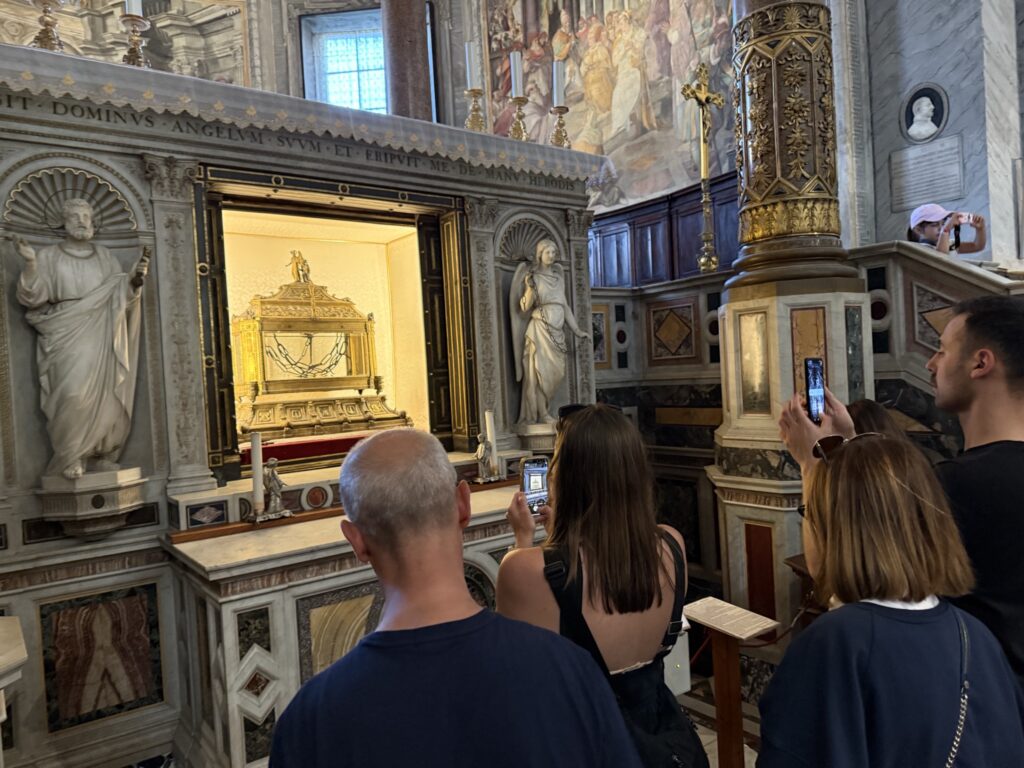
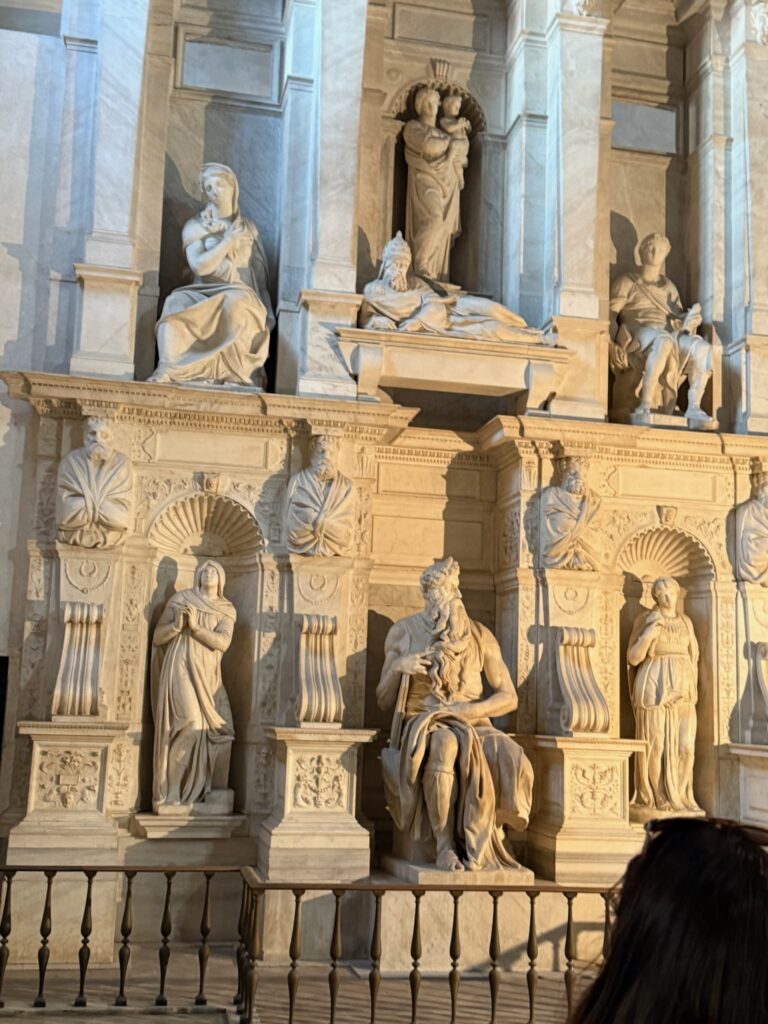
St. Peter in Chains was the next stop (I planned the whole route from home, not knowing how many places it would be possible to see). These are the chains that the angel broke to set Peter free- just sitting out in the center of a church, like it isn’t a big deal. How come the Catholic Churches get all these cool relics?
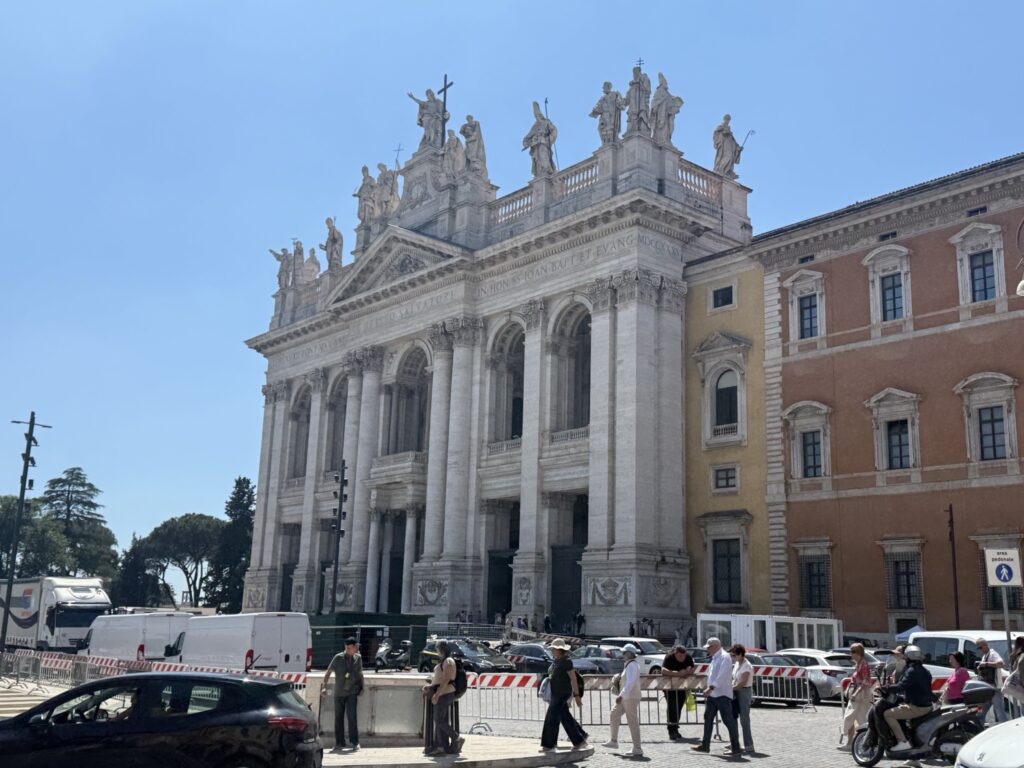
St. Mary Major Basilica was a few blocks away- and it was where the pope was recently buried, and also home to the holy manger of Jesus Christ; yes, the one from the Christmas carol, “Away in a manger.” They did recent studies to prove the claim, that the wood is from the time of Jesus, and made of the kinds of trees native to the area.
There was a line to get in. When I say line, I mean a line around the block. And the block is the size of the Greensboro Coliseum: The Italian army was there ensuring order and running the metal detectors; there were metal barricades, and dozens of tour buses were dropping off people to pay their last respects to the pope. Though we wanted to go, that was an easy “no”. Though sad, it was also uplifting to see the huge popularity of his tomb.
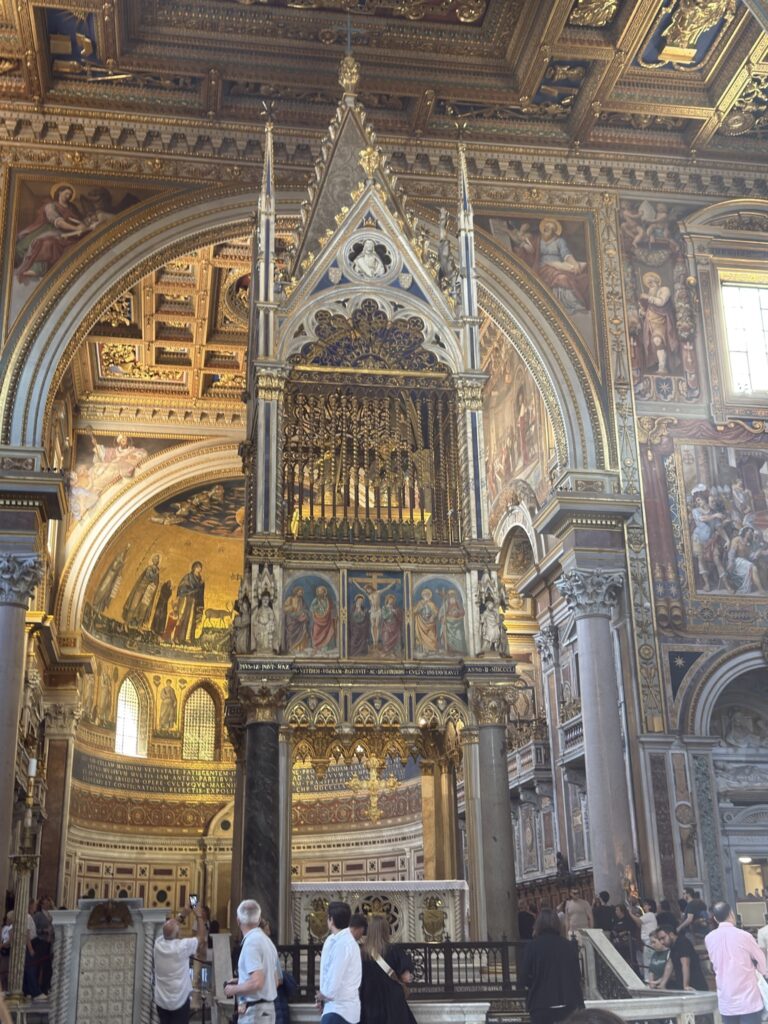
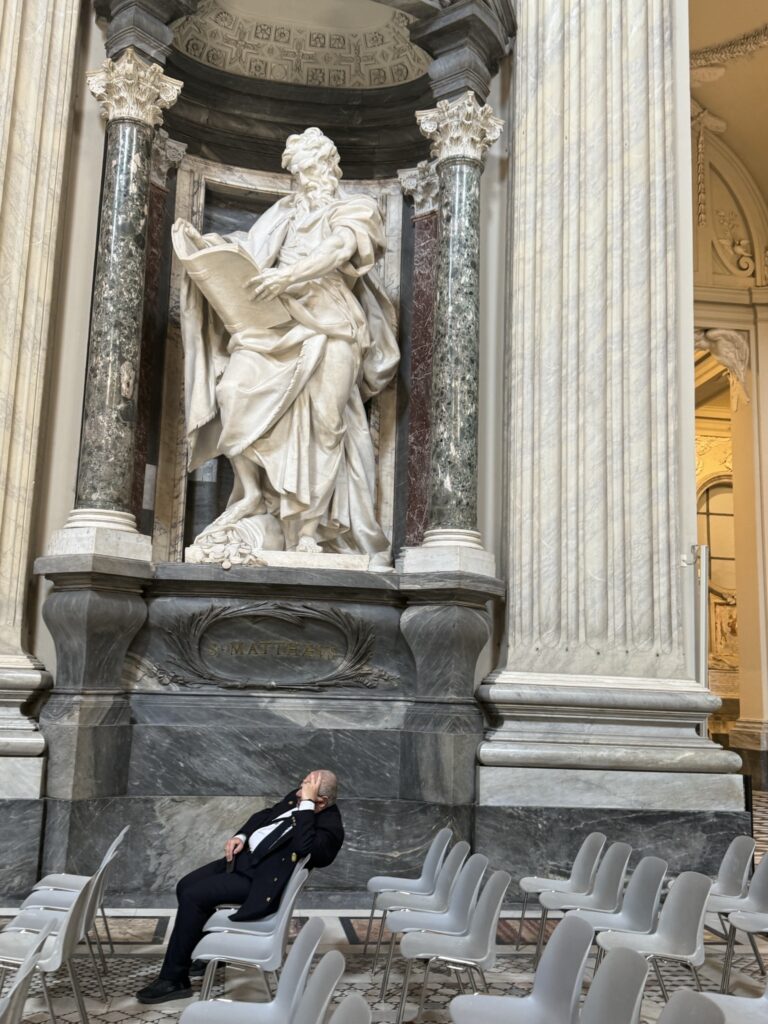
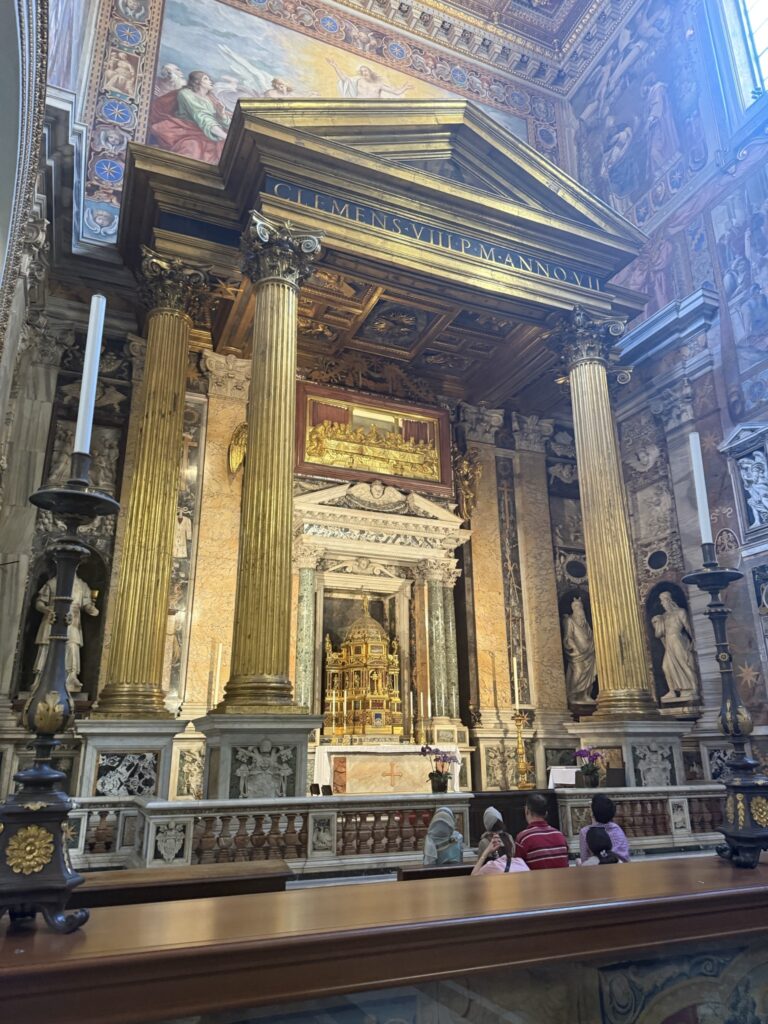
St. John Lateran is the seat of the Pope: his home church in Rome, and was the home of the Pope before the Vatican was built, and it is simply massive- 110,000 square feet, and known for the 12 statues of the apostles, with something related to the way that they were each killed: speared, beheaded, clubbed, and skinned alive among others. Yet, not a single one of them recanted their faith. These statues are 15 feet high, and simply humbling to look at. Tucked in a corner in the front is a copper relief piece of art, with the wood from the table of last supper.
Above the alter is a massive structure including the skulls of Saint Peter and Saint Paul.
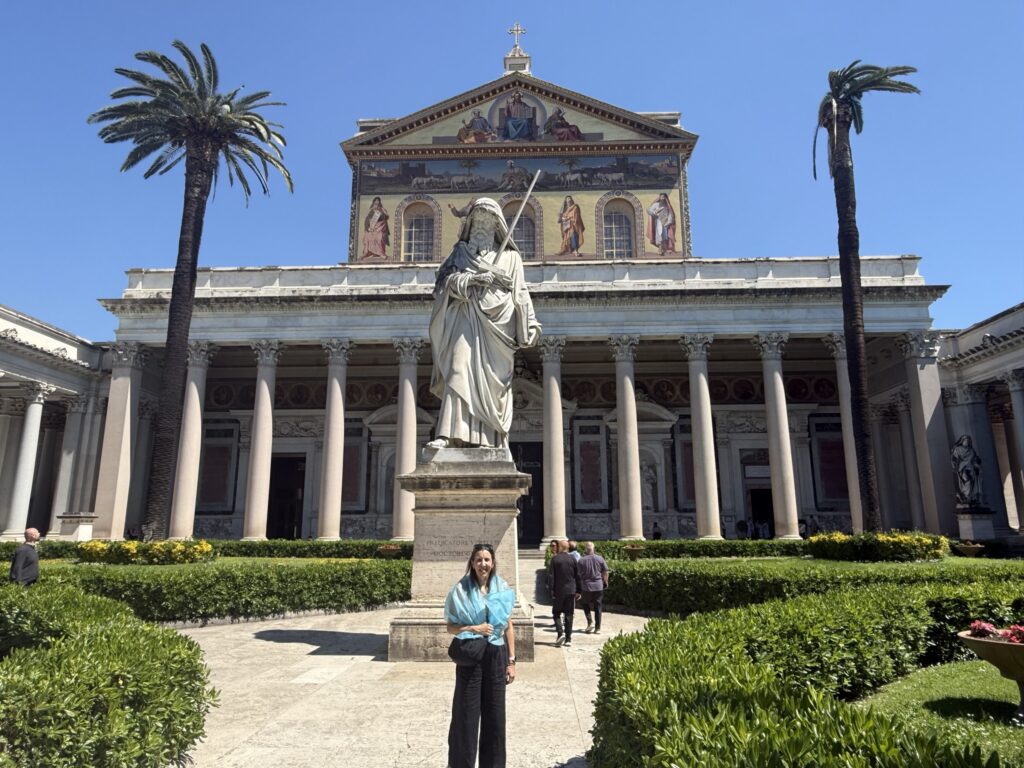
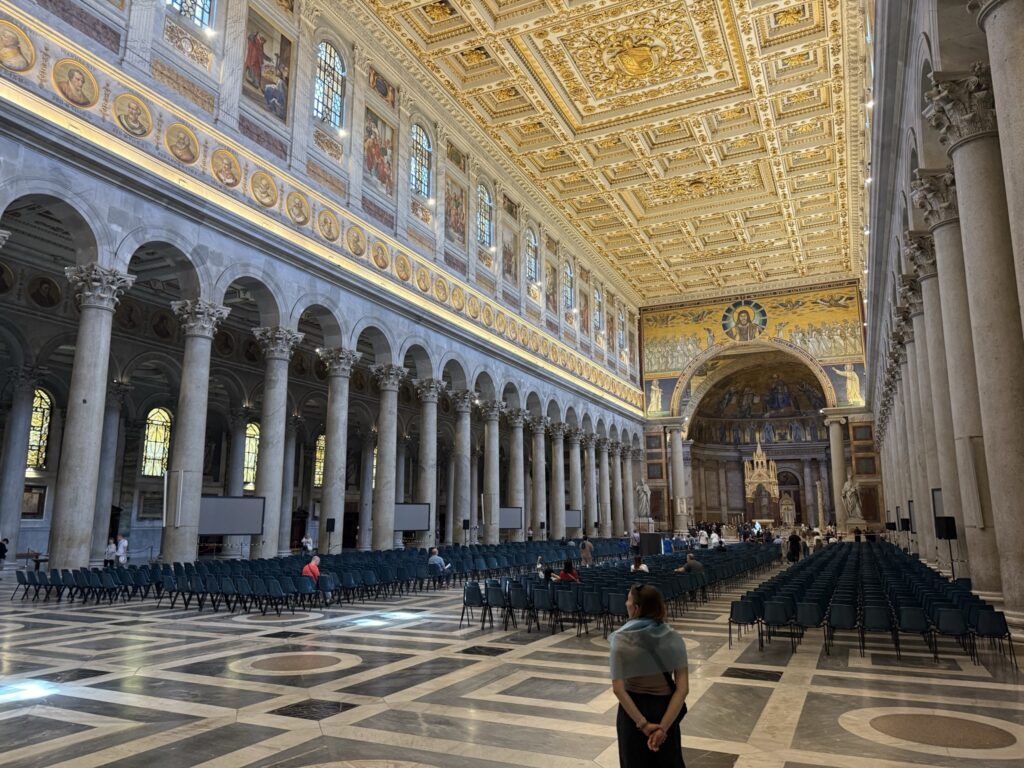
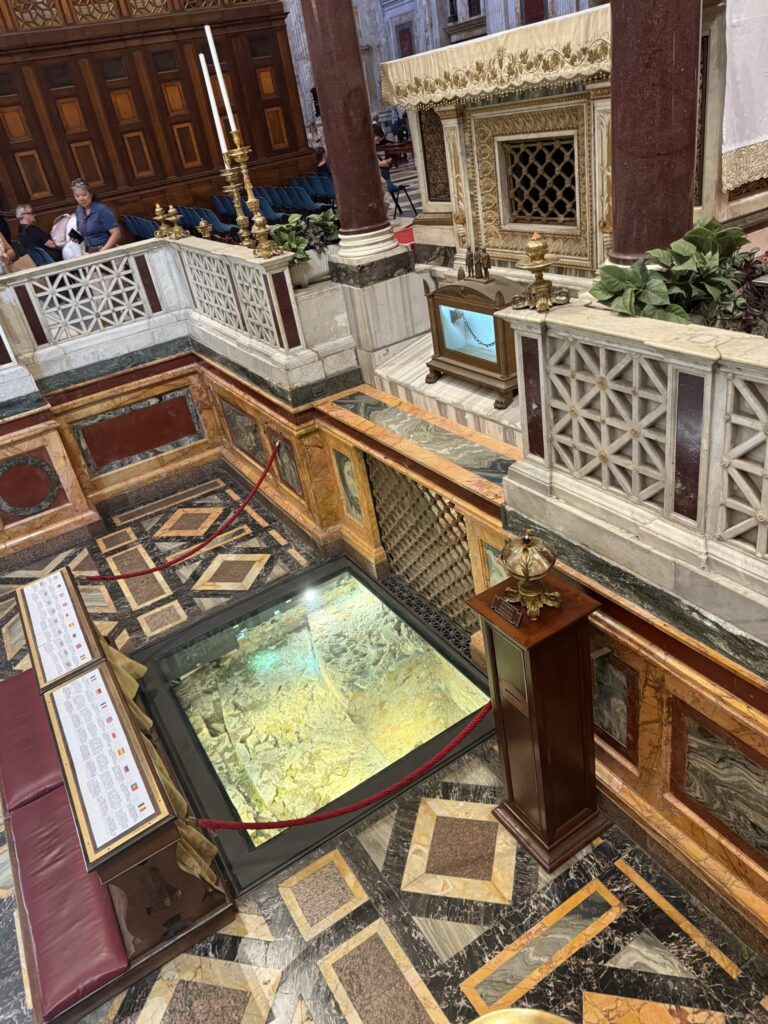
The Basilica of St. Paul Outside the Walls was our next stop- a 20 minute taxi ride south of the city. Again, tour bus after tour bus was dropping off pilgrims like me (luckily no line for us though). It was almost destroyed in the 1800s, but rebuilt with the most brilliant colors, and the most gigantic basilica yet: 127,400 square feet (just measuring length by width).
A chorus was practicing, and the acoustics in this facility are amazing. The roof has 30 something frescos that tell the story of Paul; the front has the hole in the ground where his body was disposed of when he was beheaded. They thought they would dispose of the Christian movement when they disposed of him, but it had the exact opposite impact.
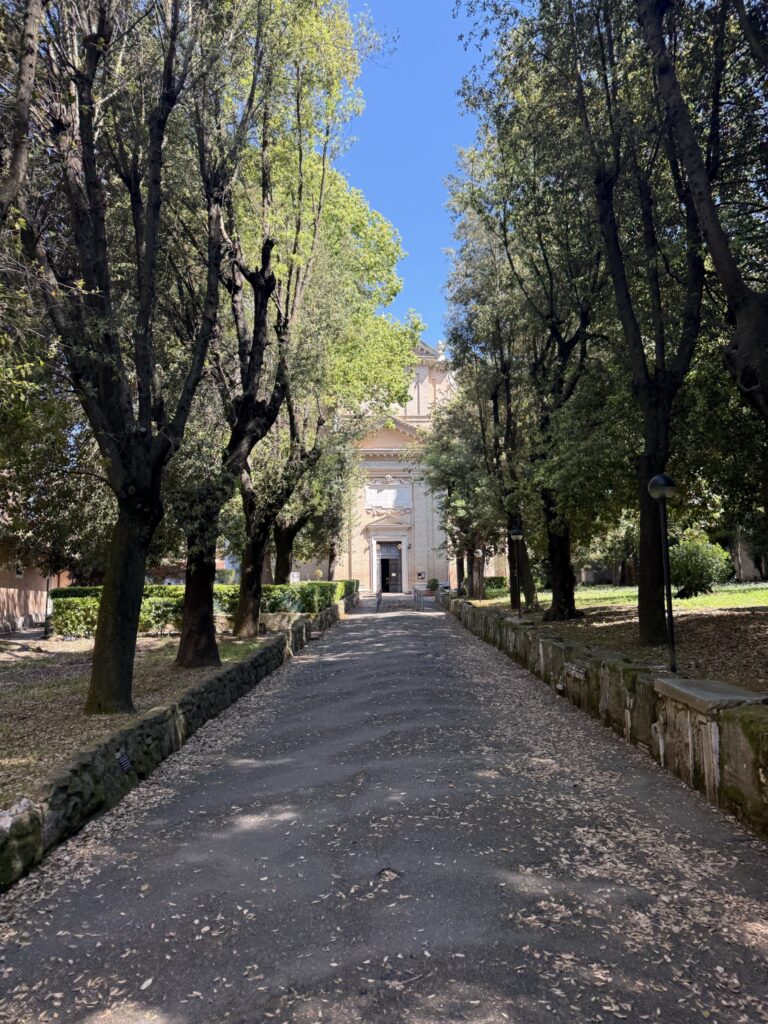
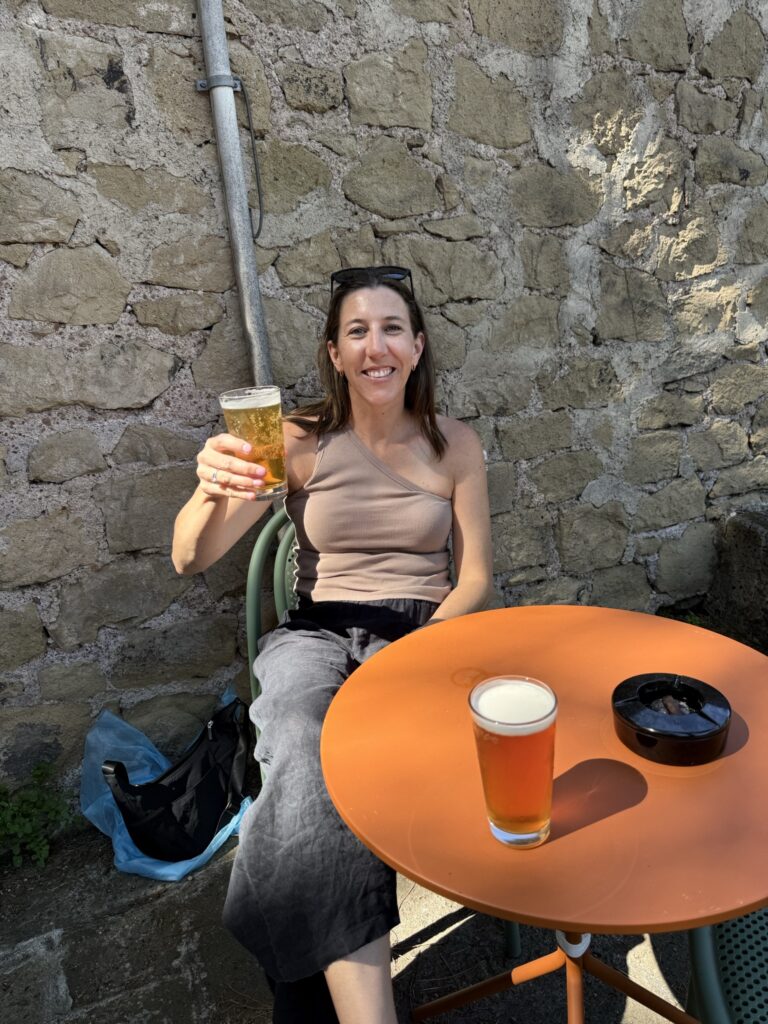
Nearby is the Tre Fontane monastery: the site where Paul was beheaded. When the sword separated his head from his body, his head bounced off the ground three times, and opened three springs of water. Weird, yes I know.
A monastery was built on these springs, and 200 years ago, they began making beer from this source of water: the newest of the 11 Trappist breweries in the world (Trappist breweries must be made by monks, and donate all their proceeds to charity). It was an unusual visit for sure- I didn’t know what to expect, but there were bus loads of groups and tours of children coming through Tre Fontane the whole time.
Im not lying when I say this beer on tap was the best I ever had- but strange to enjoy a beer under pictures of a beheading everywhere; a little unsettling.
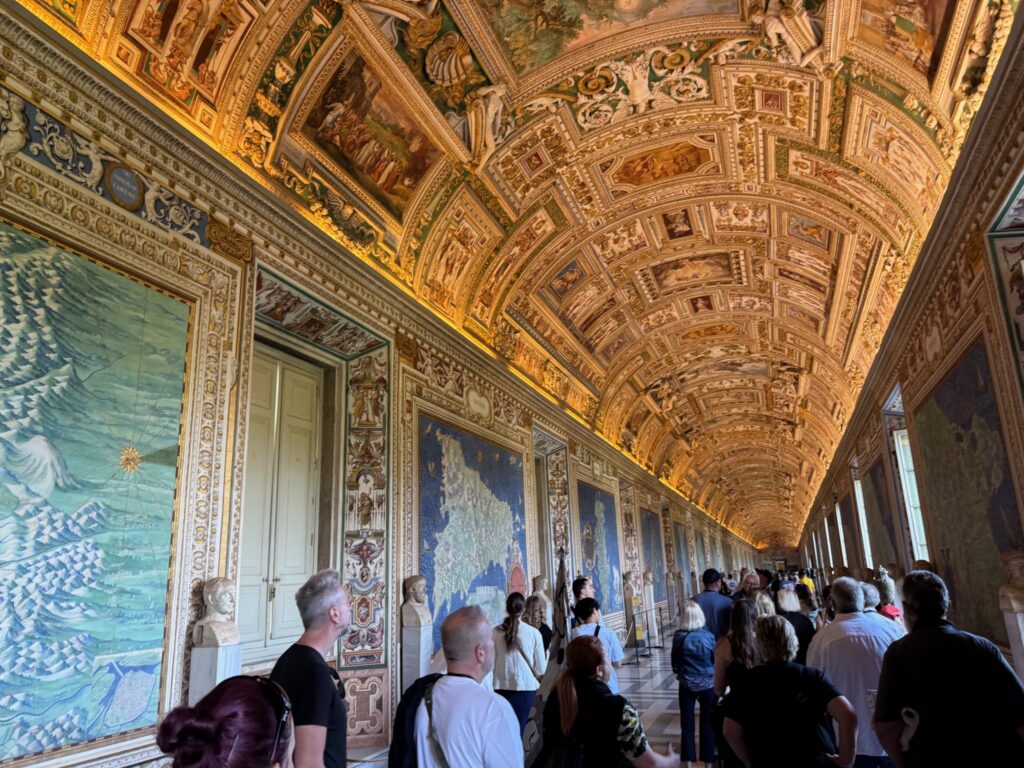
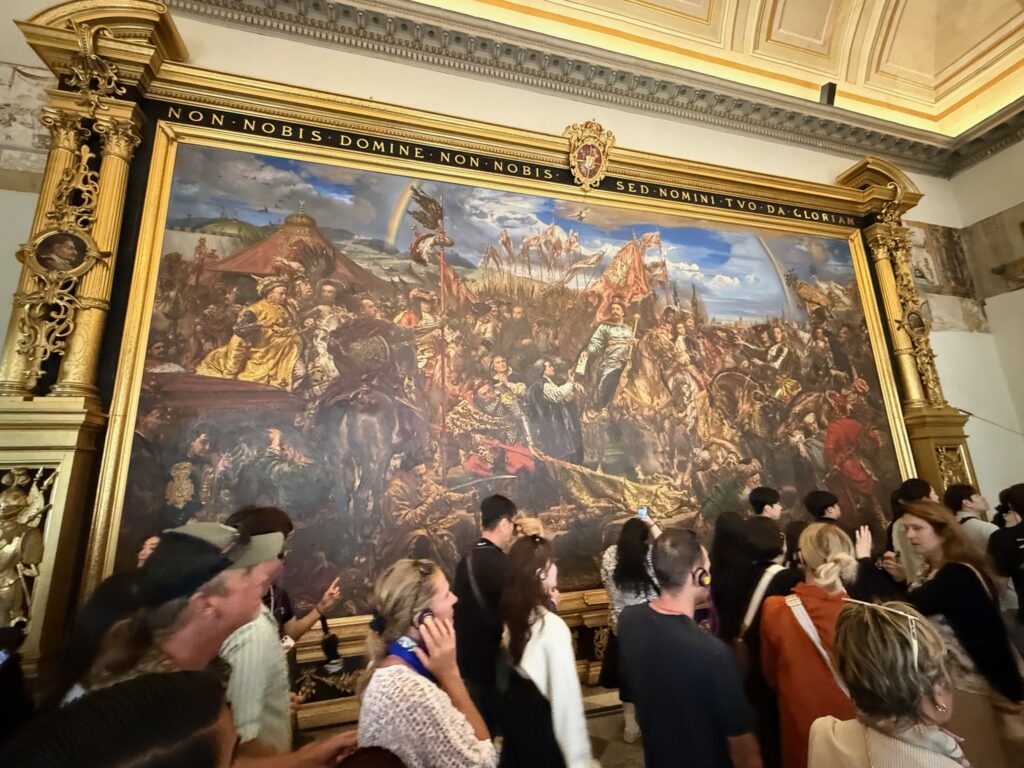
Finally, the Vatican. If you have been, you know. Besides the countless works of art, I want to share about St. Peter’s Basilica.
It took 200 years to build, and there is nothing on earth to compare its gargantuan size to: 352,800 square feet, TWICE THE SIZE of the Biltmore Estate. Also, TWICE the size of the Greensboro Coliseum.
Because this is the year of Jubilee (no, I am not catholic), we got to pass through yet another set of holy doors- we also passed through them at the other two basilicas.
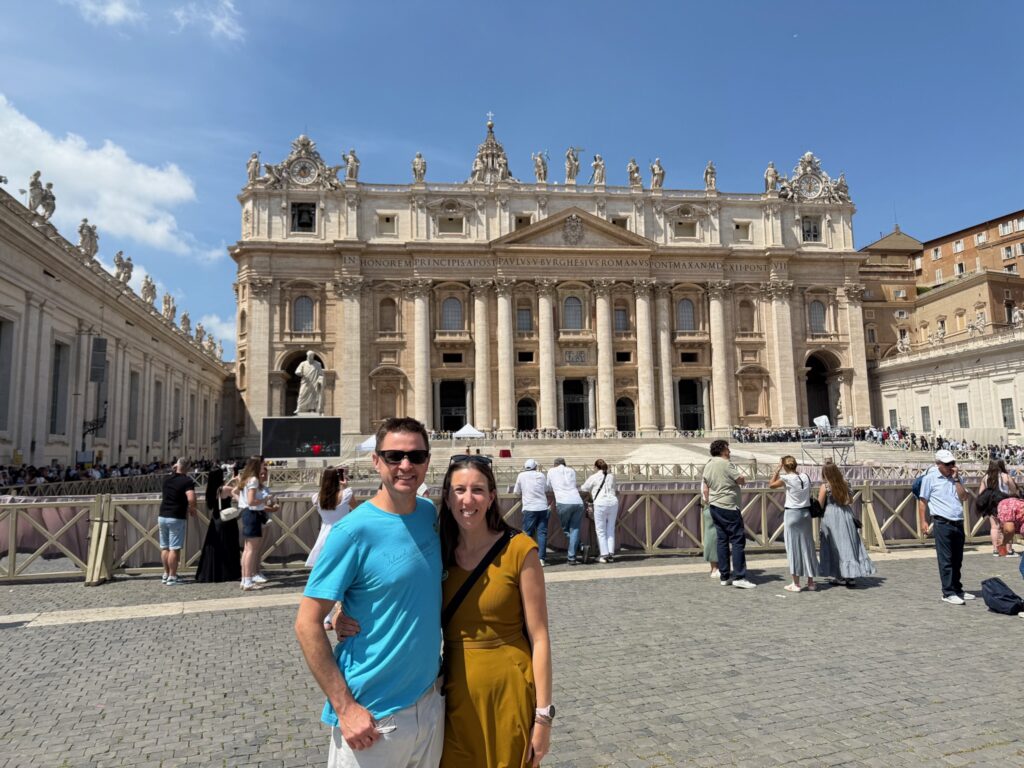
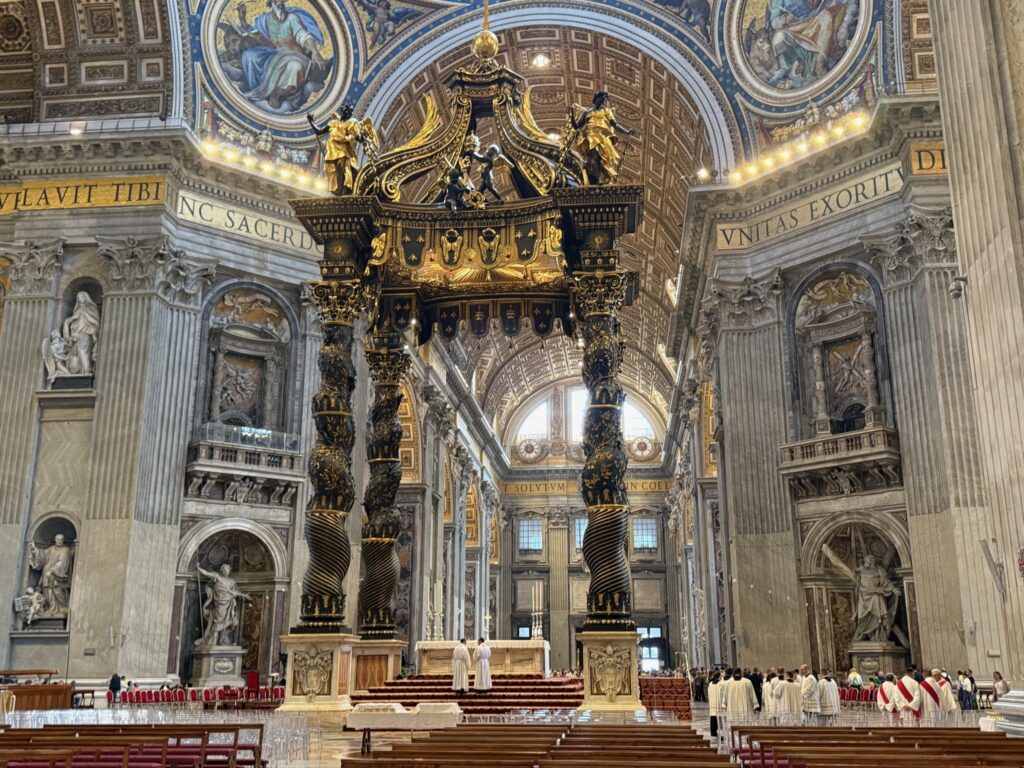
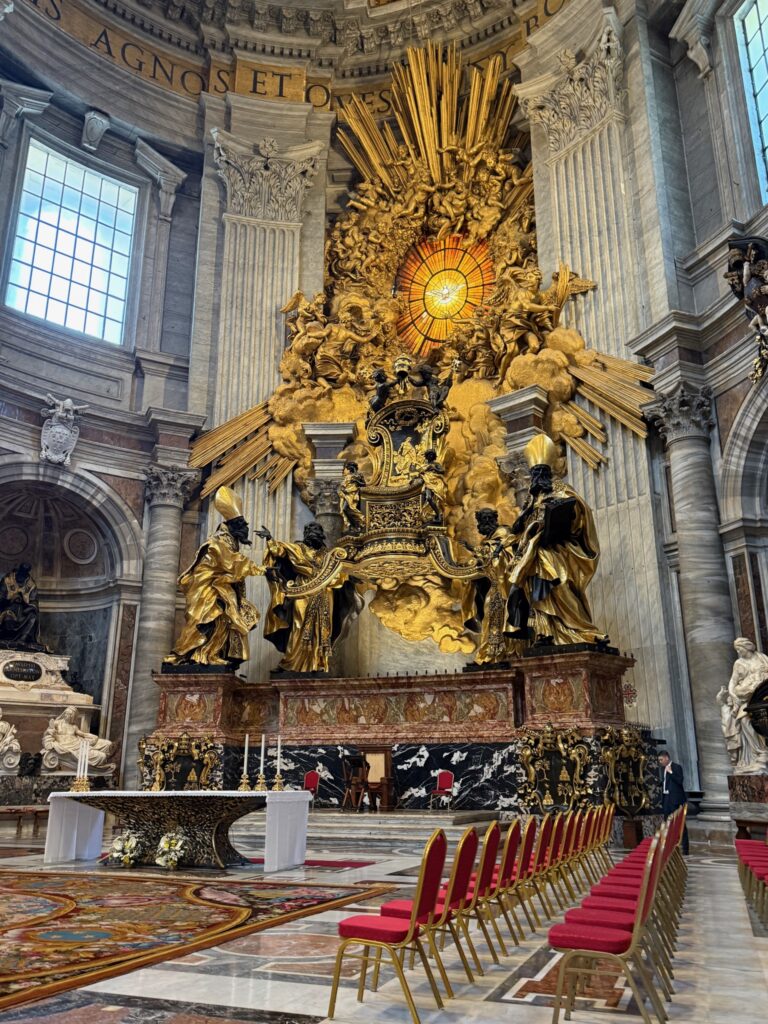
Inside St. Peter’s, the main structure over the alter has 4 major relics: the skull of St. Andrew, the spear that pierced Jesus, a part of the true cross, and the veil of Veronica (the veil used on Jesus face when he carried the cross).
Also, the Chair of St. Peter: a massive, massive display. Just look at the little man beside this thing- his job is to protect this thing, all day- only one of the most special and holy items of all time.
These things were so, incredibly special to see.
The other things to see.
The Coliseum-it is huge, and since they cleaned the outside several years ago, it is bright white and a beautiful site in the middle of the city.
It may be possible to see it without a tour guide, but definitely get a tour guide.
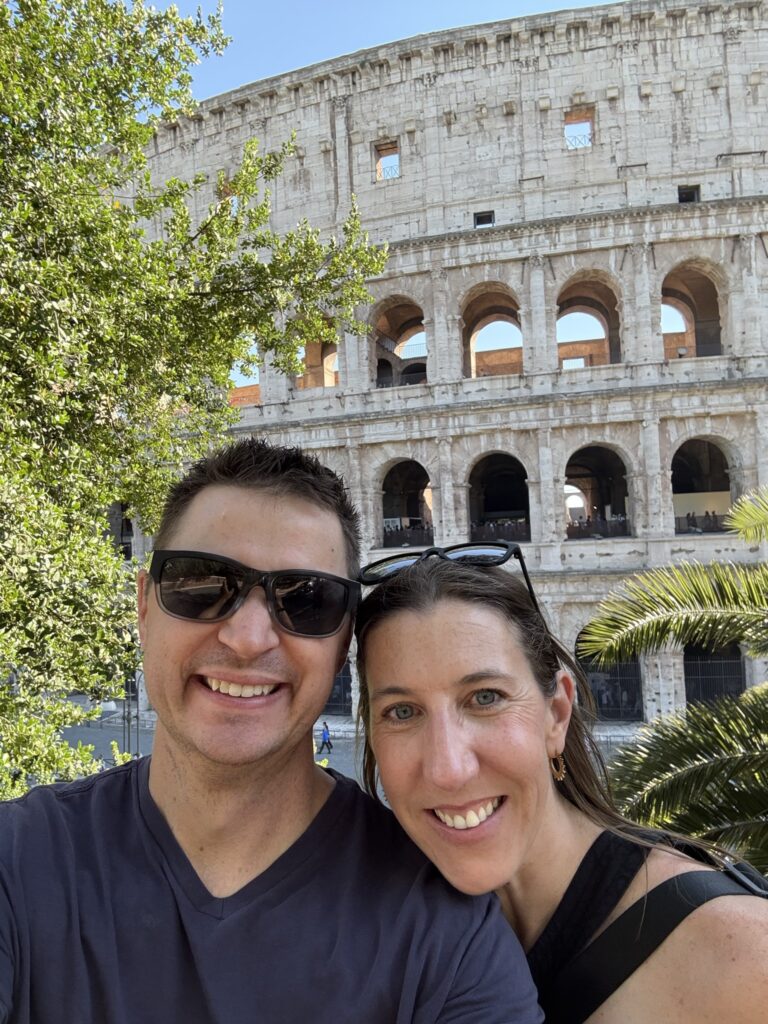
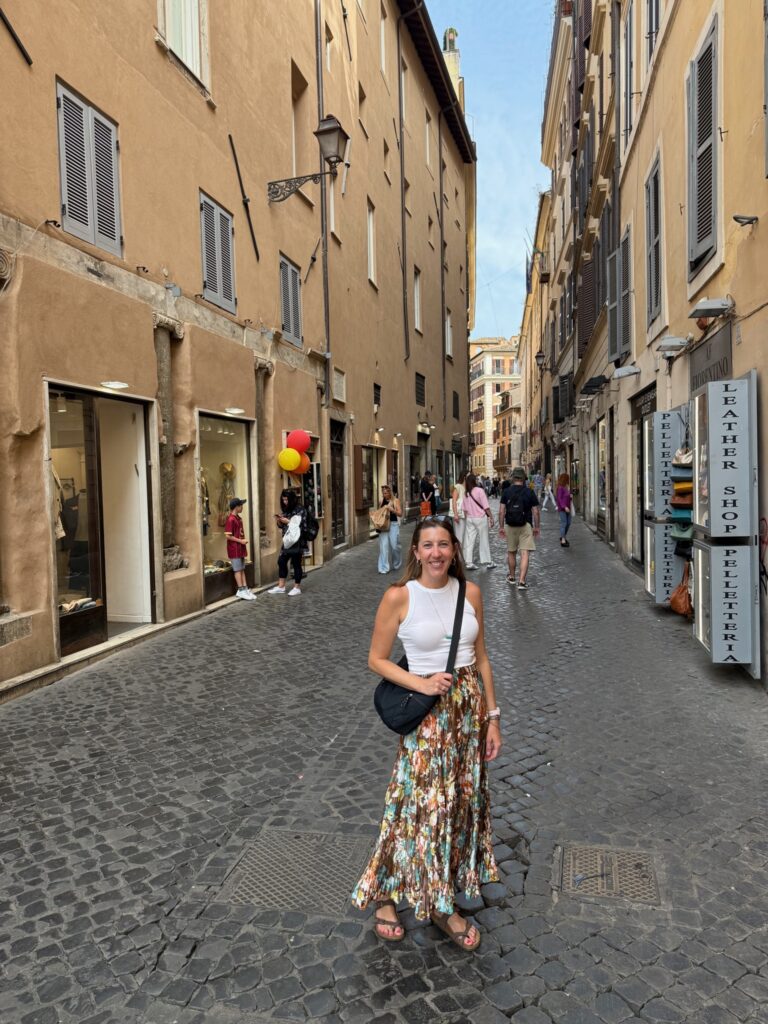
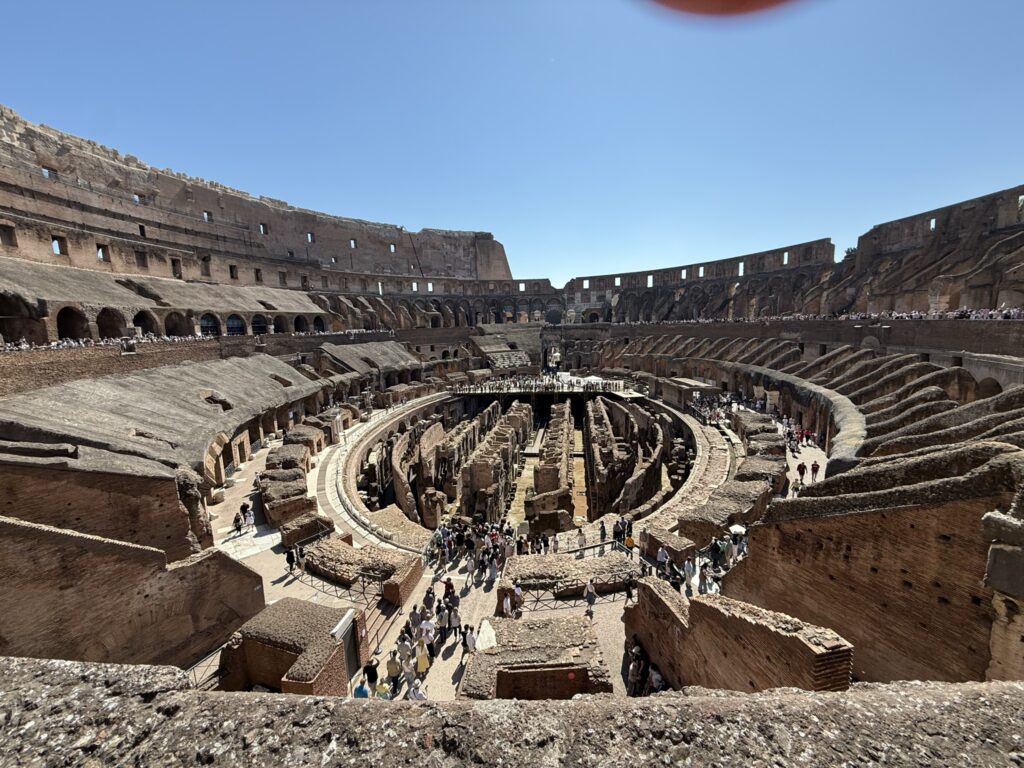
Right beside the coliseum is Palpatine Hill- this is the true historical center of Rome, and our tour of the Coliseum included a tour of Palpatine Hill. It had amazing gardens and a great view of the city.
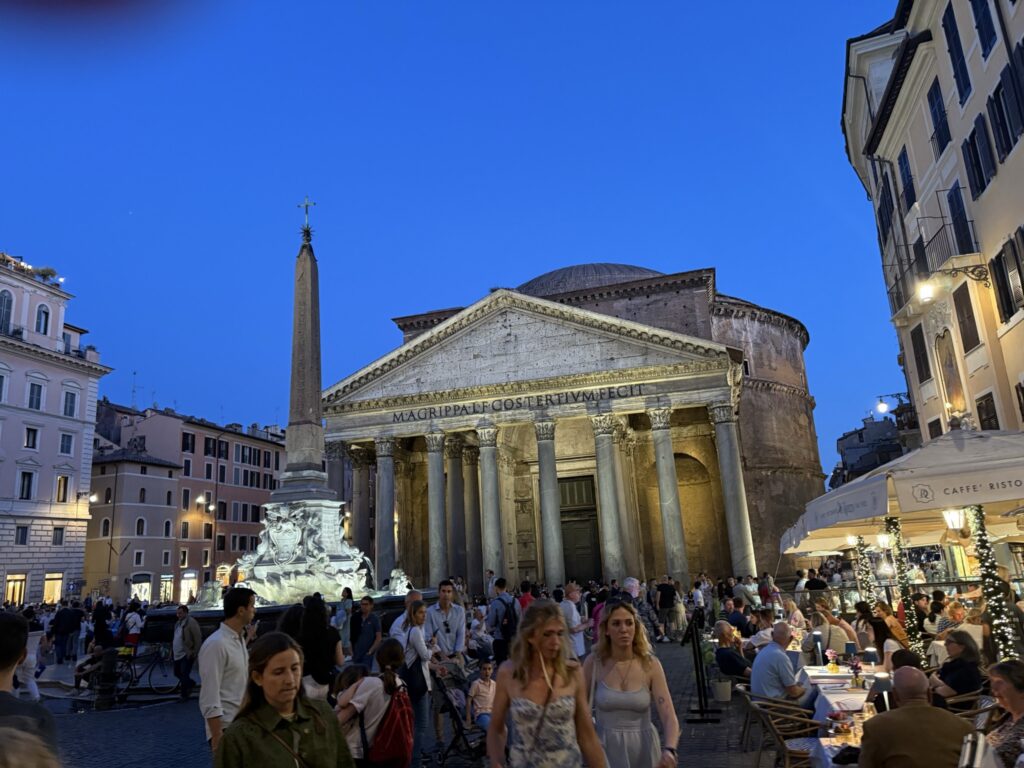
Just strolling around town, we saw the Pantheon at night- bustling with kids and families and people eating Gelato. My god, how does everyone in that whole city eat Gelato each night?
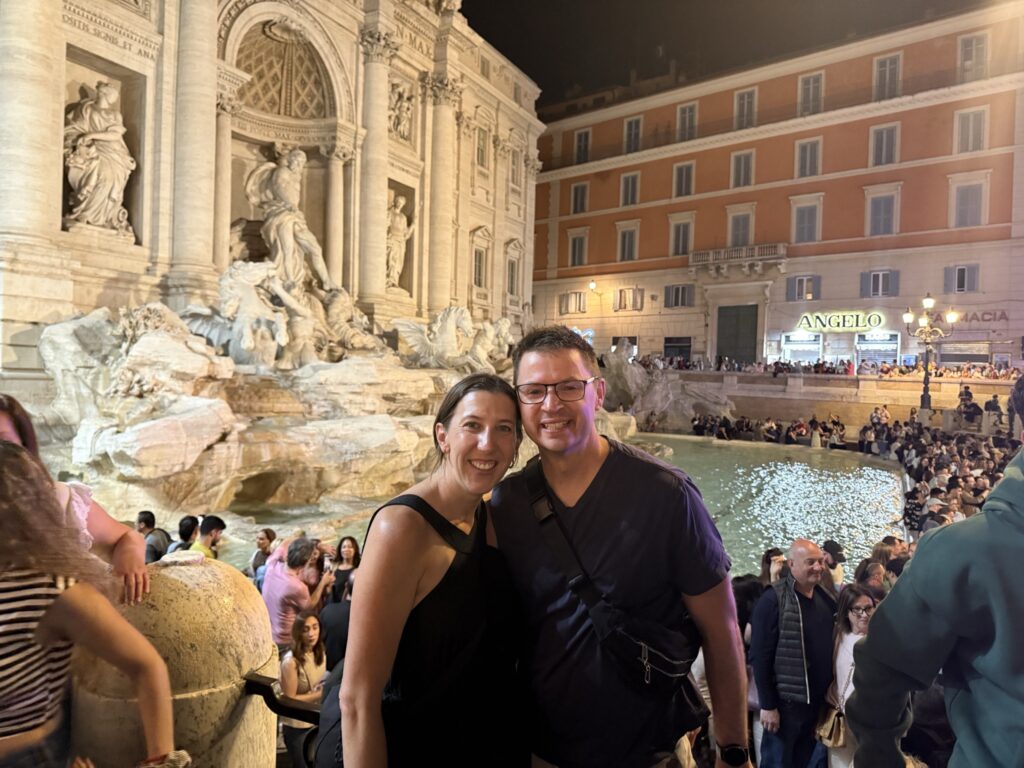
Also the Trevi fountain. Yes, I rolled my eyes at Taylor’s innocent request to see it (everyone says there are too many crowds). Yes, I was wrong: it was beautiful, and worth seeing. There were tik-tockers everywhere.
The Vatican Museum is special. Buy tickets ahead of time.. The line for tickets was several hundred yards long, and you don’t want to waste limited time in Rome waiting in a line; most tours of the Vatican include a “skip the line” option.
The Vatican museum is wild- the size and number of exhibits is hard to describe. If you have been there before, you know. They have 9 miles of exhibits; I think our tour guide said it was the second biggest museum in the world. There is so much beautiful art, but at a certain point it is hard to appreciate it all.
No matter what you do, you are limited to 3-4 hours without needing to eat.
The food.
There are 4 types of traditional pasta in Rome: Caccio Pepe, Gricia, Carbonara, and Amatriana. Lots of places claim to have the best, but ultimately that comes down to preference. I ate pasta 5 times in 3 days, and don’t regret it for a second.
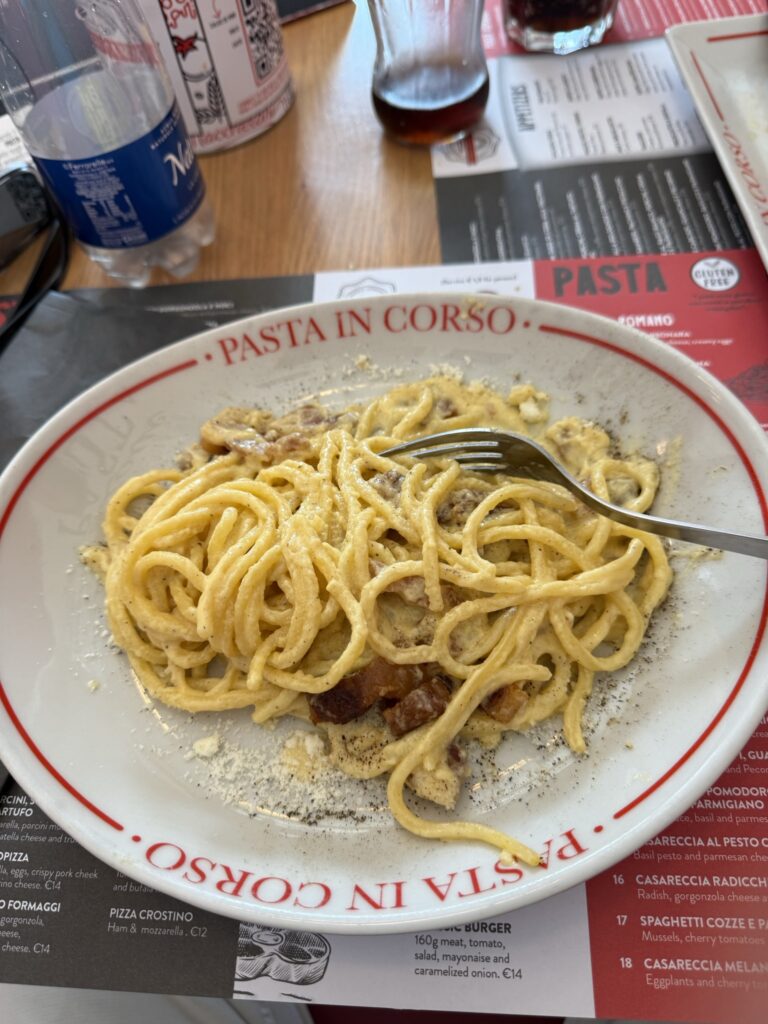
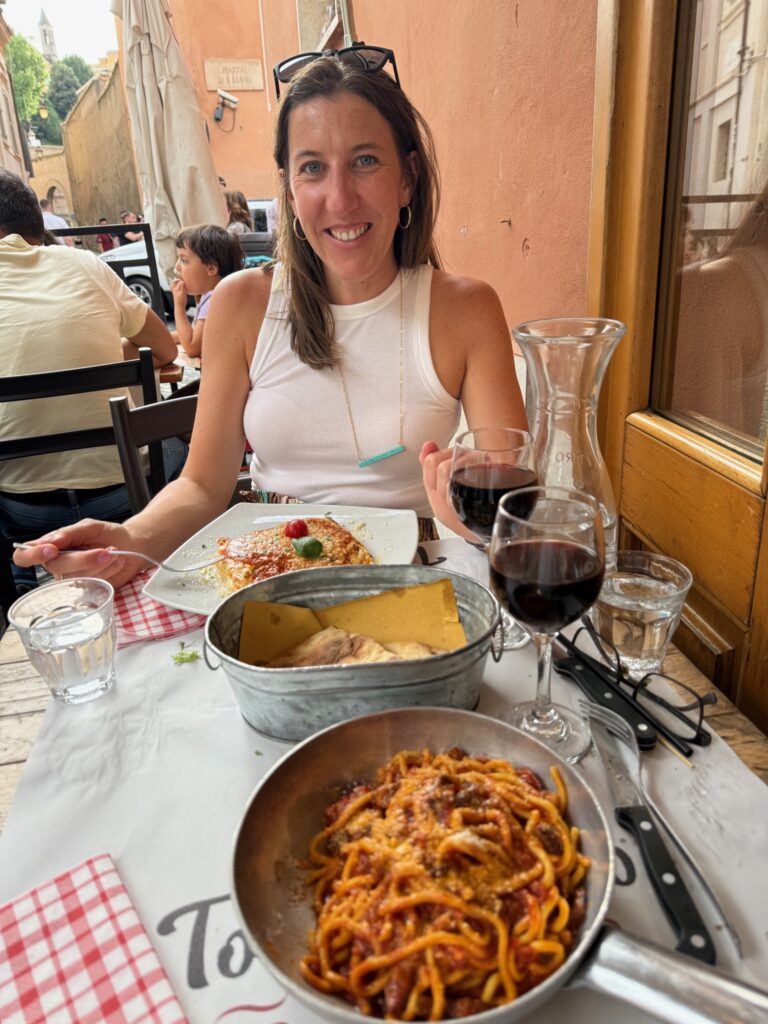
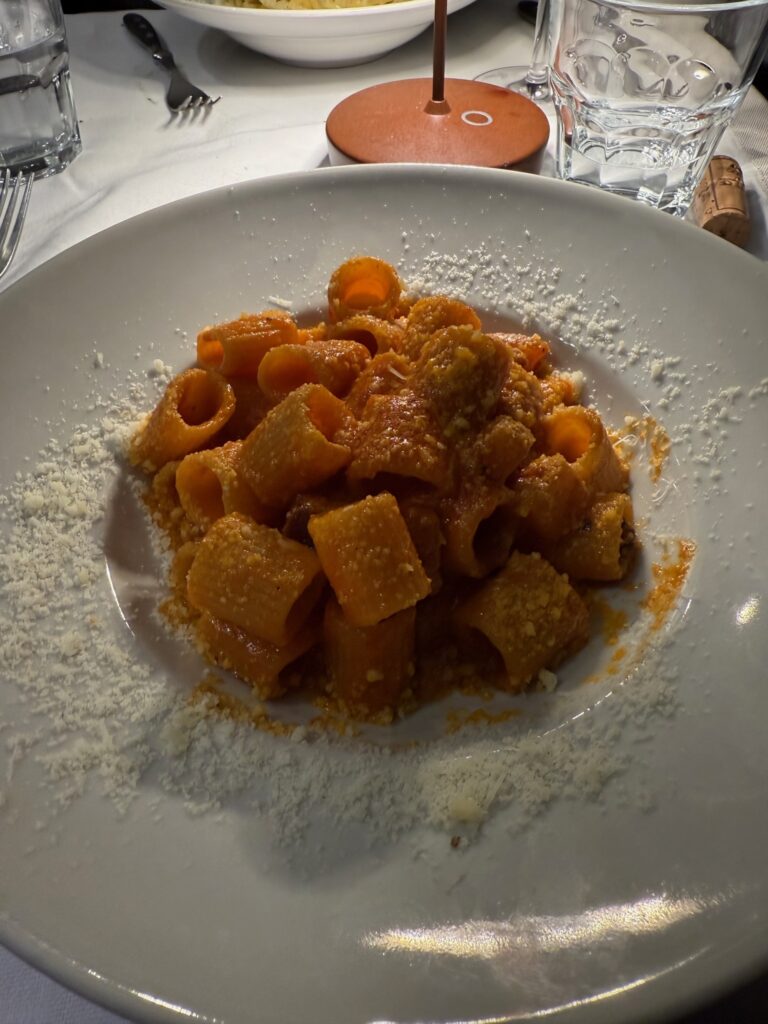
Do yourself a favor and make dinner reservations in Rome. It is busy, and you don’t want to end up in a situation where you are hungry after touring (and walking) all day, without a place to sit and enjoy dinner.
For breakfast, expect something like a pastry and a cappuccino. That too was special each morning.
Though you can stake out some great lunch spots, I would steer clear of making lunch plans. There are so many places in the town to explore, it would be hard to be tied to a specific area for lunch. We just grabbed something on the go, and it worked out great.
For dinner, we did some research, but found that many restaurants do not have a standard “reservation” process like we expected from back home. They are busy, they serve food, and if you are there, you can eat; if you want to know what they serve, you might be able to find it on their Facebook page.
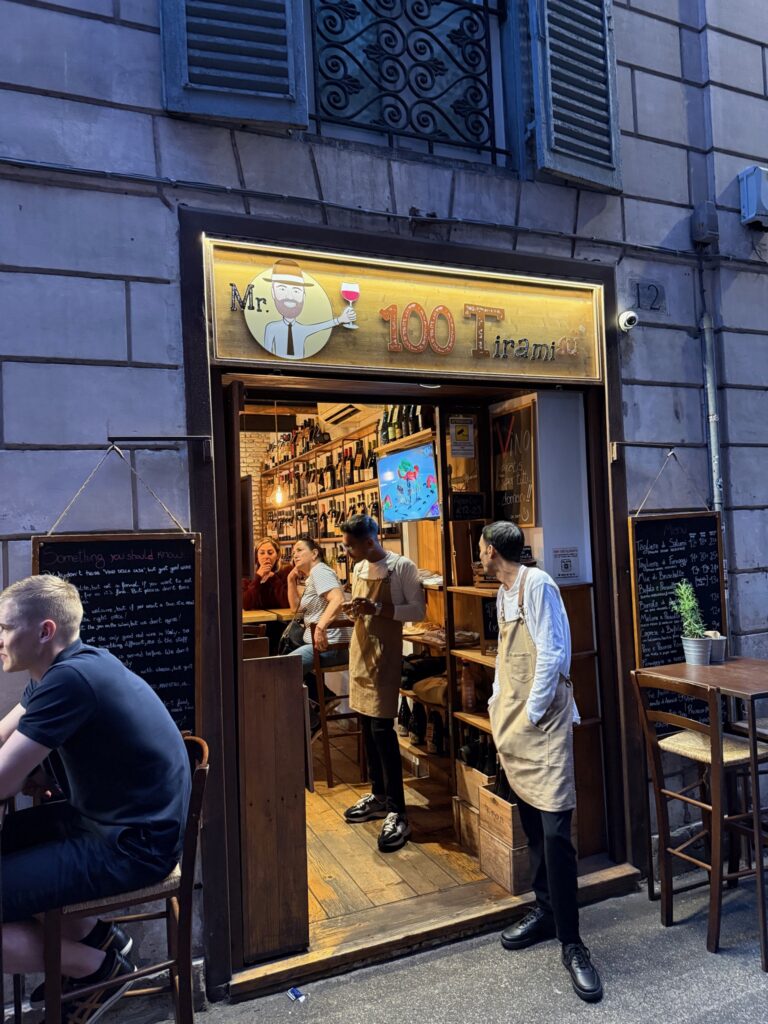
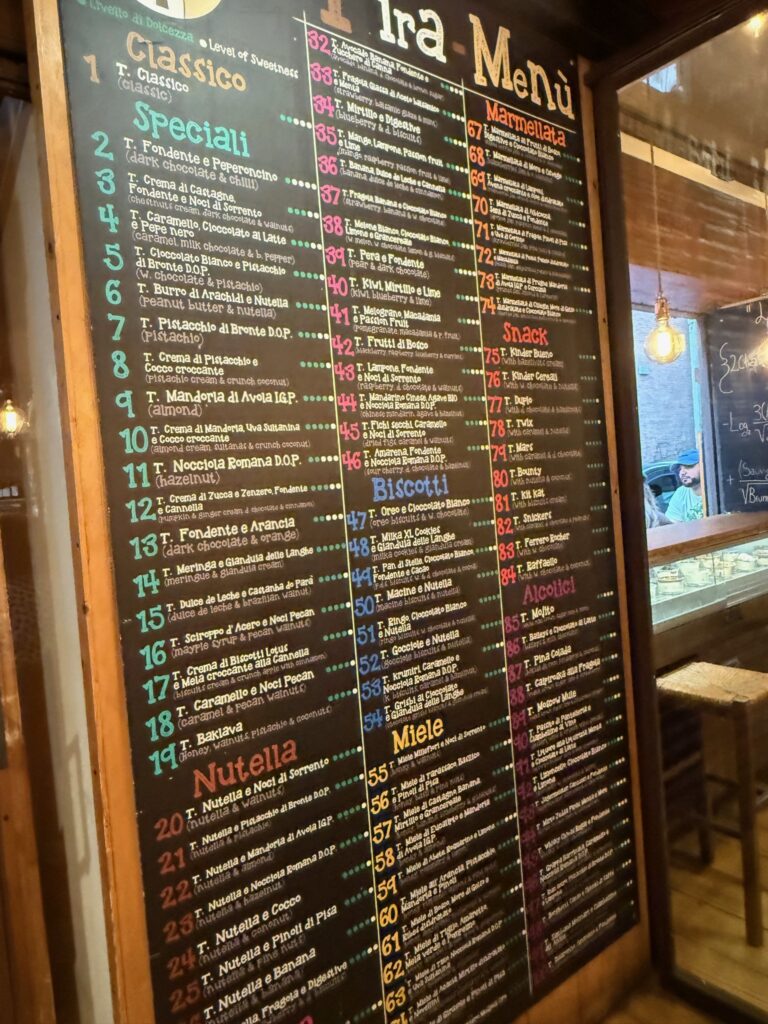
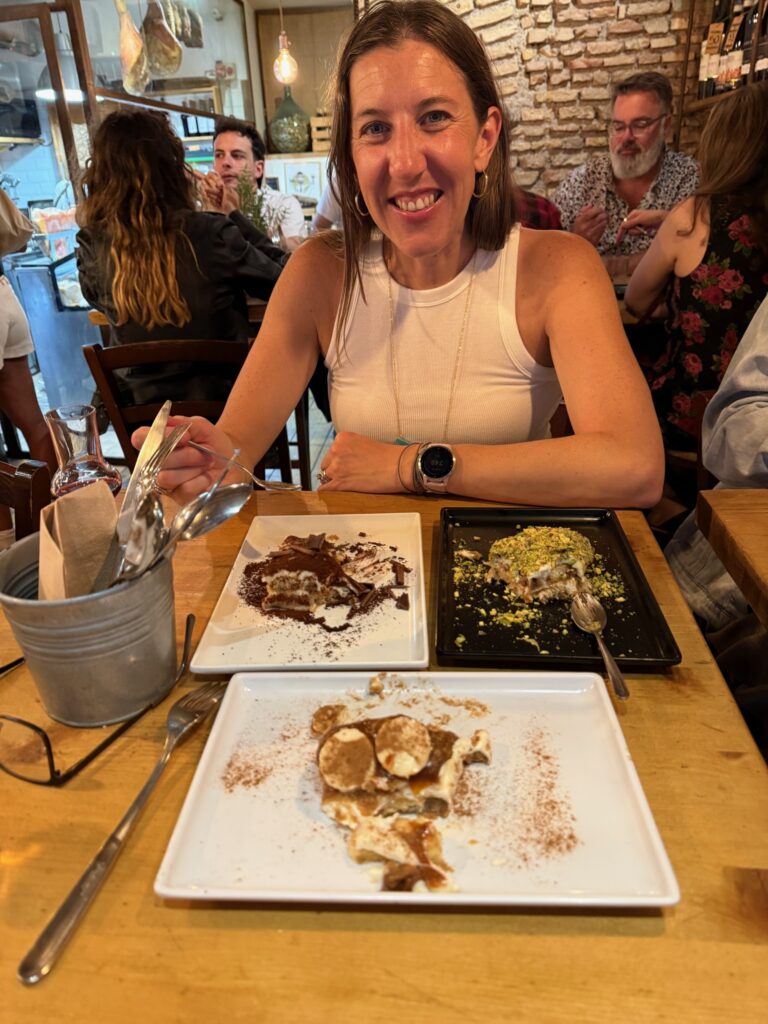
One of the highlights was Mr 100 Tiramisu. They had 100 flavors of Tiramisu- do I love it? Not in the USA. No. But in Rome? Oh my goodness it was delicious- we shared 3 pieces.
Where to stay
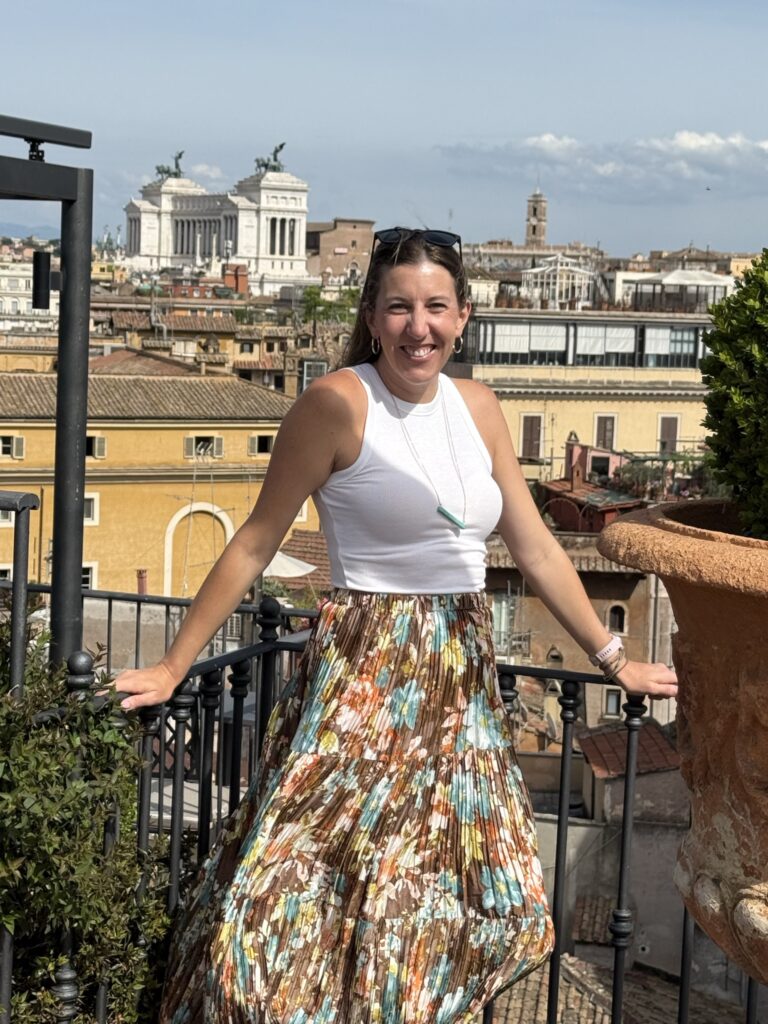
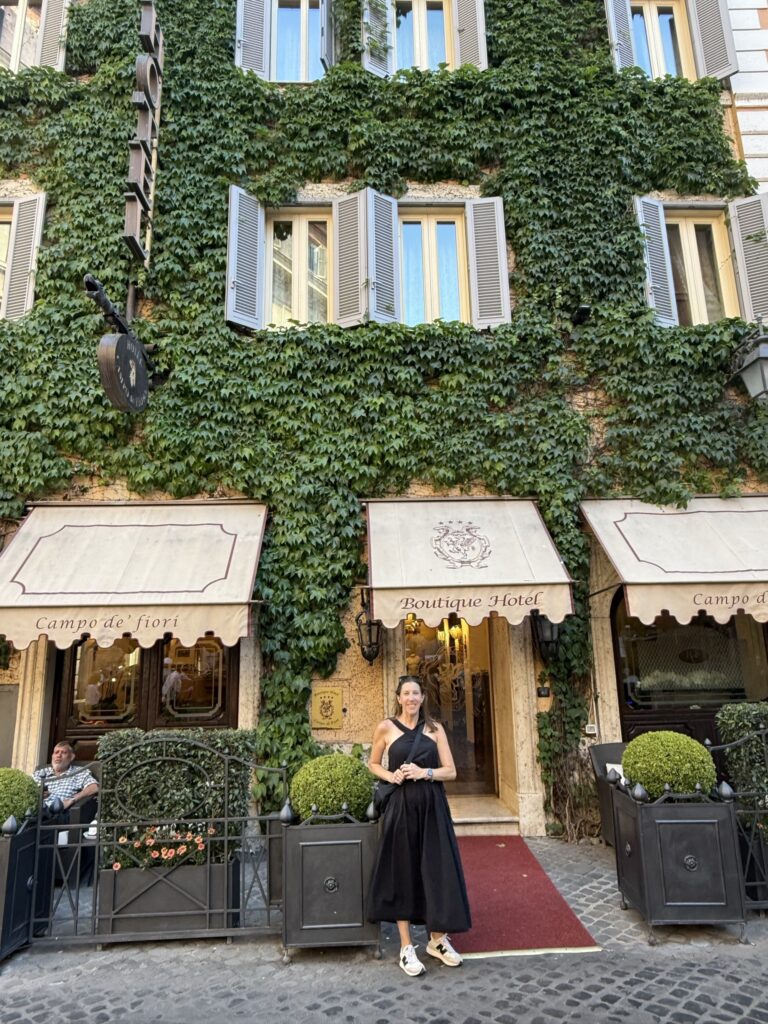
There are lots of “right” answers to this question. We stayed on the Campo di Fiori square, near Trastevere, and it was great. It had a rooftop bar (we brought our own bottle), and we could see the Vatican and the rest of Rome from up there.
If you want a busy, but not loud, area of town, that area won’t disappoint you.
What stood out about Rome.
It was the liveliest, safest city I have ever visited. We walked a ton- about 18000 steps a day, and saw a good part of the city.
When planning a trip like this, it is hard to know exactly what it possible to fit in to just a few days: but Rome was more walkable, and safer than I expected, and after walking all of the miles, there was hardly a single storefront that was not occupied.
Police and military people were found in most areas with people; we passed some every 1/4 mile or less.
One thing neat about Rome is the water. They still use the viaducts that the ancient Romans built, and in most squares and hidden in many corners, there are water fountains just running water for anyone to take. There was one beside where we ate dinner, and we just watched: someone came and washed vegetables, several couples filled water bottles, some washed their faces, some dog came by and drank.
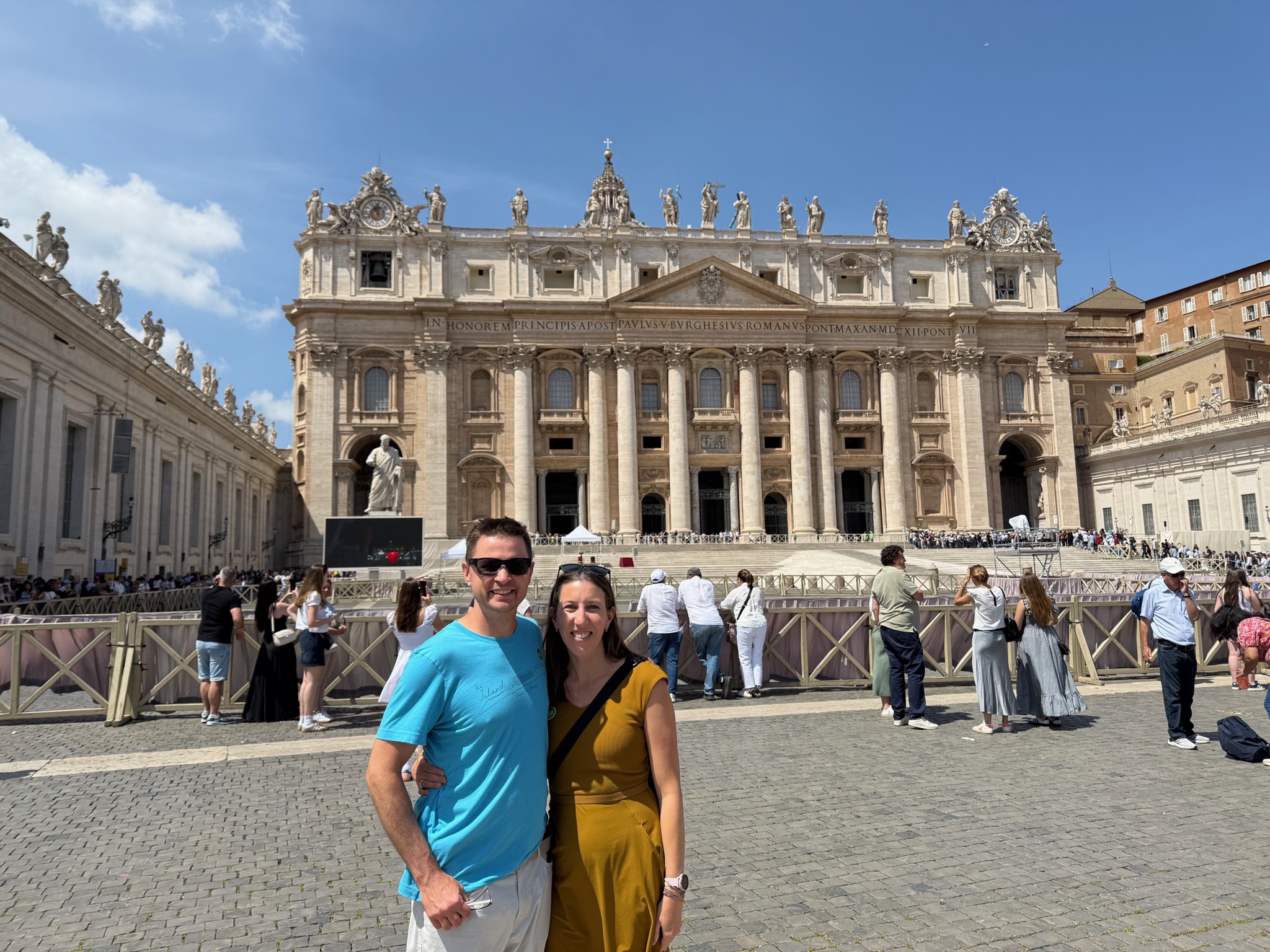
Leave a Reply